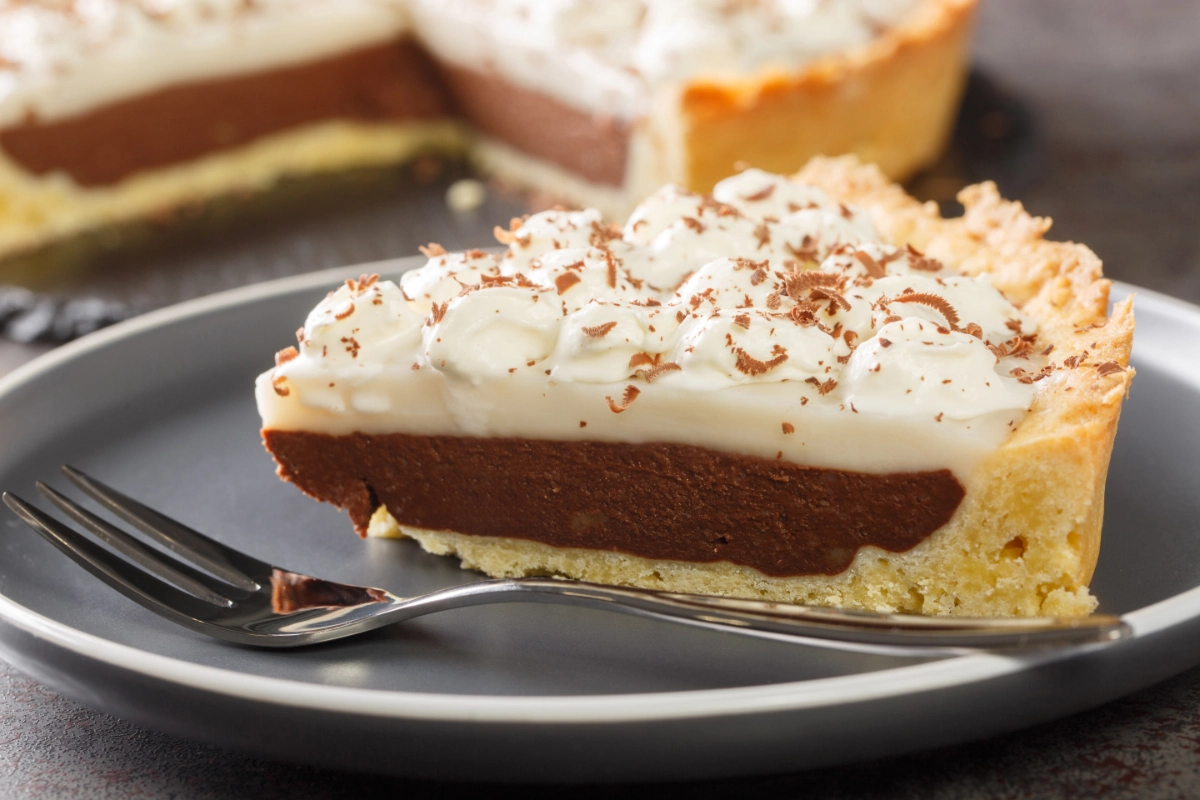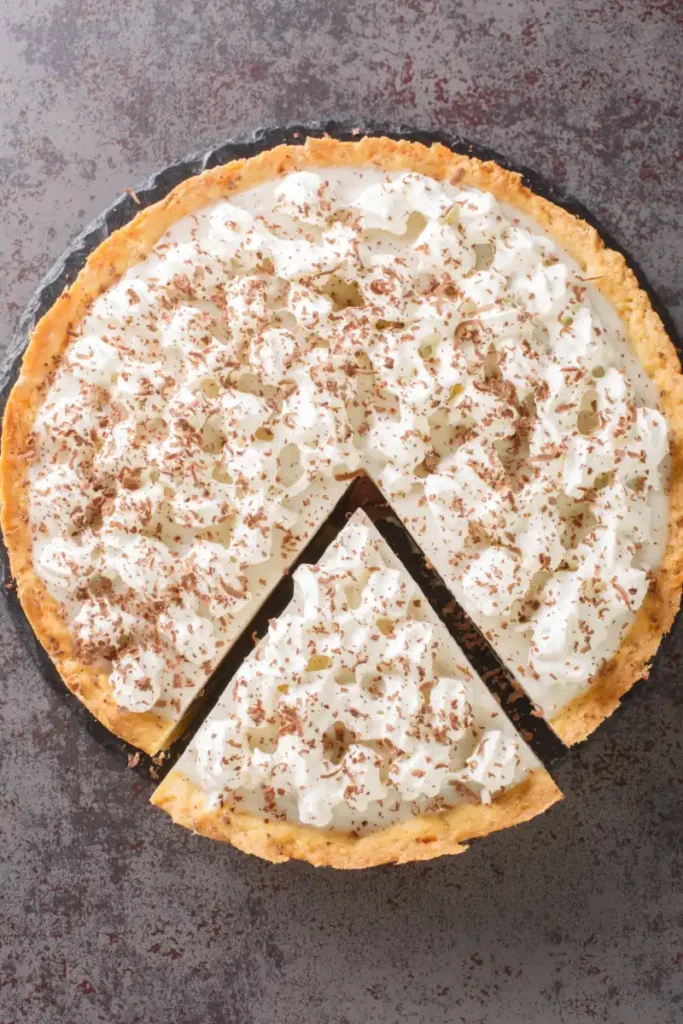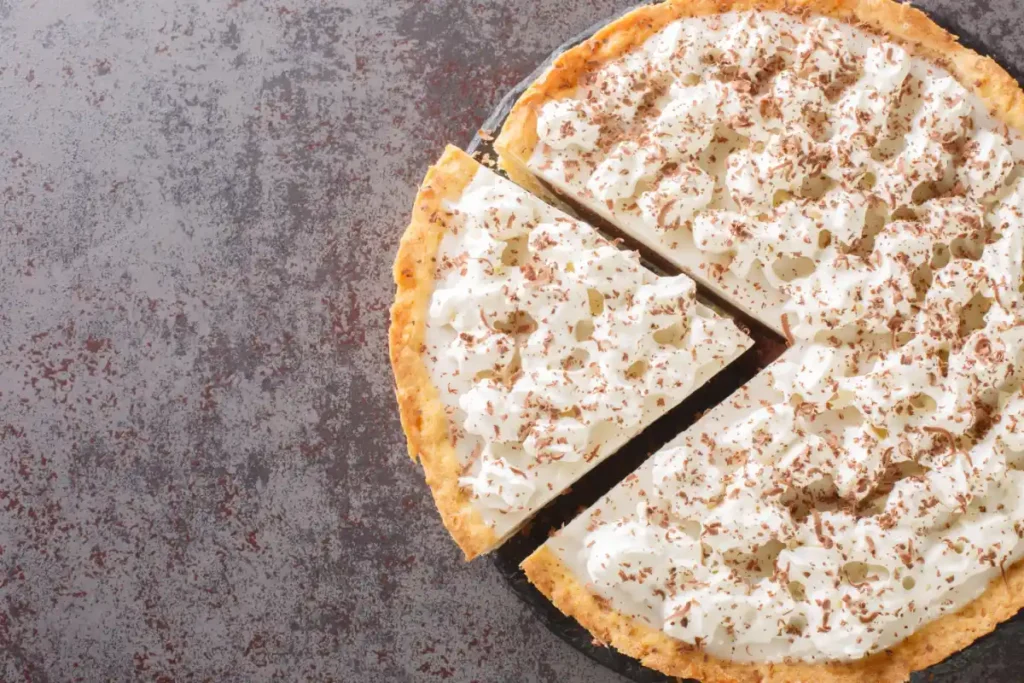Imagine sinking your teeth into a soft, creamy dessert with a delicate sweetness that’s both comforting and unique. This is the experience you’ll have when you taste a haupia cake, a beloved Hawaiian treat that captures the essence of the island’s culinary heritage.
This article will take you on a delicious journey into the world of haupia cake, unraveling its secrets, and exploring its cultural significance. We’ll delve into the heart of this dessert, discovering the magic of haupia itself, its origins, and what makes it so special. We’ll also guide you through a step-by-step recipe, so you can recreate this Hawaiian delight in your kitchen.
Let’s start by understanding the history and cultural significance of haupia cake, its connection to the Hawaiian Islands, and why it holds a special place in the hearts of locals and visitors alike.
The Haupia Cake: A Hawaiian Delight
A Taste of Paradise: The Origins and Significance of Haupia Cake
The haupia cake is more than just a dessert; it’s a symbol of Hawaiian tradition and a testament to the resourcefulness of the indigenous people. Haupia, the foundation of this cake, is a traditional Hawaiian dessert made from taro root, a staple ingredient in the islands’ cuisine. This connection to the land and the use of local ingredients highlight the cultural significance of haupia cake.
Traditionally, haupia was a simple dessert made from cooked and pounded taro root, then blended with coconut milk and chilled. It was a versatile treat enjoyed in various forms, from simple haupia to variations with different flavorings. The origins of haupia cake can be traced back to the arrival of Western influences, particularly the introduction of baking techniques. As time passed, Hawaiians adapted their traditional desserts, leading to the creation of haupia cake. The cake embraced the essence of the traditional haupia, incorporating it into a new format that allowed for more creative variations and flavor combinations.
Today, haupia cake remains a popular dessert in Hawaii, enjoyed by locals and visitors alike. It’s often featured at special occasions like weddings, birthdays, and festivals. It’s a beloved treat that captures the essence of the island’s culinary heritage and embodies the spirit of aloha.
Haupia cake has also gained popularity beyond Hawaii, becoming a sought-after dessert in other parts of the world. It has become a bridge between cultures, bringing a taste of the Hawaiian Islands to those who may not have the chance to visit. Whether you’re a seasoned foodie or just starting your culinary exploration, haupia cake is a must-try dessert that promises a delightful and memorable experience.
Let’s delve deeper into the heart of this cake, exploring the secrets of haupia, the ingredient that makes it so unique and delicious.
The Secret Ingredient: Haupia
Understanding Haupia: The Foundation of the Cake
To truly appreciate the haupia cake, we must first understand its namesake: haupia. It’s a traditional Hawaiian dessert that serves as the foundation for the cake, offering a distinctive flavor and texture that sets it apart from other desserts.
Haupia has a unique texture that’s both firm and smooth, almost like a delicate pudding. It’s a subtle, slightly sweet dessert with a taste that’s both comforting and intriguing. It’s often described as having a delicate sweetness and a slightly savory note, making it a truly unique dessert experience.
The key ingredient that gives haupia its signature flavor and texture is taro root. This versatile root vegetable is a staple in Hawaiian cuisine and offers a surprisingly nuanced flavor profile. It has a naturally sweet taste with an earthy note, making it a perfect base for desserts like haupia.
Creating haupia involves a simple but meticulous process. The taro root is first cooked until tender, then carefully blended into a smooth paste. This paste is then strained to remove any lumps or fibers, resulting in a silky, smooth base for haupia. The final step involves mixing the taro paste with coconut milk, creating a creamy mixture that is then chilled until firm. This simple process yields a delightful dessert that showcases the natural flavors of taro and coconut milk.
Variations in Haupia:
While the traditional haupia is made using taro root, various variations offer a range of flavor experiences.
Coconut Haupia:
- This version, as its name suggests, emphasizes the coconut flavor, often using a higher proportion of coconut milk in the recipe.
Regular Haupia:
- This classic version highlights the earthy sweetness of taro and people often serve it with a simple garnish of shredded coconut or a drizzle of honey.
Other Variations:
- You can also infuse haupia with other flavors like lilikoi (passionfruit), macadamia nuts, or even chocolate, resulting in a more complex and indulgent dessert.
The versatility of haupia makes it a perfect canvas for culinary creativity, allowing chefs and home cooks alike to experiment with different flavors and textures.
Now that we understand the essence of haupia, we can delve into the recipe that brings it together into the beloved haupia cake.
The Recipe: Haupia Cake Unraveled
Deconstructing the Haupia Cake: A Step-by-Step Guide
Ready to try your hand at creating this Hawaiian gem? Let’s break down the recipe and unveil the secrets of a perfect haupia cake.
You’ll need a few basic ingredients to get started:
- Coconut milk: The foundation of haupia cake, choose high-quality full-fat coconut milk for the richest flavor and texture.
- Cornstarch: This helps thicken the haupia mixture, creating a soft and smooth texture.
- Sugar: Provides sweetness, and adjusts to your preference.
- Salt: A pinch of salt enhances the flavors of the other ingredients.
- Vanilla extract: Adds a touch of warm sweetness.
Now, let’s dive into the steps:
- Preparing the Ingredients: Gather all the ingredients and ensure they are at room temperature. This will help the ingredients blend smoothly.
- Combining the Wet Ingredients: In a medium saucepan, whisk together the coconut milk, sugar, and salt until well combined.
- Cooking the Haupia Mixture: Over medium heat, bring the mixture to a simmer, whisking constantly. Slowly whisk in the cornstarch until the mixture thickens and becomes glossy. Remove from heat.
- Baking the Cake: Preheat your oven to 350 degrees Fahrenheit. Grease a 9×13 inch baking pan. Pour the haupia mixture into the prepared pan and bake for 30-40 minutes, or until the cake is set and slightly golden brown on top.
- Cooling and Serving: Let the cake cool completely in the pan before serving. You can enjoy it at room temperature or chilled for a refreshing dessert.
Flavor Variations and Additional Ingredients:
The basic haupia cake recipe is a starting point, a blank canvas for culinary creativity. Here are some ideas to add your personal touch:
- Flavorings: A dash of vanilla extract, a squeeze of lilikoi (passionfruit) juice, or a handful of chopped macadamia nuts can elevate the flavors of haupia cake.
- Fruits: Adding chopped pineapple, mango, or even berries can bring a burst of freshness and vibrant colors to the cake.
- Layered Delights: Create a layered cake by combining the haupia with other desserts, like sponge cake or pound cake.
The possibilities are endless, inviting you to explore the world of flavors and textures within haupia cake.
Tips for Perfect Haupia Cake:
- Consistency: Don’t overcook the haupia mixture. It should be thick and slightly glossy, but not too dense.
- Moisture: Ensure the cake is sufficiently moist. If it seems dry, you can add a bit more coconut milk to the mixture.
Remember, baking is a journey of discovery. Don’t be afraid to experiment and find what works best for your taste.
Now that you’ve learned the art of crafting a delicious haupia cake, let’s explore the versatility of haupia beyond its cake form.
Beyond the Cake: Haupia in Other Dishes
Beyond the Cake: Haupia’s Culinary Versatility
Haupia cake is a popular dessert, but haupia itself is a versatile ingredient that you can use in many dishes. It has a unique texture and flavor.
Imagine the creamy richness of haupia adding a touch of elegance to traditional desserts. You can find it gracing the menus of many Hawaiian restaurants and bakeries, starring in a variety of sweet treats.
Haupia in Other Desserts:
- Haupia Pie: This delightful pie features a flaky crust filled with creamy haupia, often topped with whipped cream or fresh fruit.
- Haupia Pudding: This smooth and silky pudding is a lighter and more refreshing version of the traditional haupia. It can be enjoyed as a simple dessert or served with a drizzle of honey or a sprinkling of toasted coconut.
- Haupia Ice Cream: This unique ice cream combines the rich flavor of haupia with the coolness of ice cream, resulting in a refreshing and decadent treat.
Haupia in Savory Dishes:
But haupia isn’t limited to sweet dishes. Its creamy texture and subtle sweetness can also add a touch of intrigue to savory dishes.
- Haupia-Infused Sauces: You can use haupia to create unique sauces for fish, chicken, or even vegetables. The creamy texture of haupia adds a luxurious touch to the sauce, while its subtle sweetness balances the savory flavors.
- Haupia Topping for Fish or Poultry: Add a dollop of haupia as a topping for baked fish or roasted chicken, adding a touch of sweetness and creaminess to the dish.
- Haupia Filling for Dumplings or Savory Pastries: You can also use haupia as a filling for dumplings or savory pastries, creating a delightful contrast of textures and flavors.
The use of haupia in savory dishes is a testament to its versatility and potential to add a unique touch to any cuisine. Learn more about taro root, the foundation of haupia, to understand its versatility even more.
Haupia’s Global Reach
Haupia is not only a staple in Hawaiian cuisine but is also gaining popularity in other parts of the world. Its unique texture and flavor are capturing the attention of chefs and foodies alike, leading to a wider range of haupia-based dishes and desserts. Its versatility and adaptability are leading to a global appreciation of this Hawaiian treasure.
Now that you’ve gained a deeper understanding of the versatile nature of haupia, let’s explore the best ways to enjoy this delicious dessert.
Enjoying Haupia Cake: Tips and Suggestions
Enjoying Haupia Cake: Tips and Serving Ideas
Now that you’ve learned how to create a delightful haupia cake, it’s time to discover the best ways to enjoy this Hawaiian treat.
Haupia cake is delicious enjoyed both at room temperature or chilled. It’s up to you to decide which way you prefer. If you’re enjoying it on a hot day, chilling it will provide a refreshing and cooling experience.
A dollop of whipped cream or a sprinkle of fresh fruit can add a touch of sweetness and visual appeal to your haupia cake.
Pairing Haupia Cake with Beverages:
- Hawaiian Fruit Juices: The tropical flavors of pineapple, guava, or mango juice complement the sweetness of haupia cake.
- Pineapple or Mango Smoothies: These creamy and refreshing smoothies provide a light and flavorful pairing for haupia cake.
- Coffee or Tea: For a more sophisticated pairing, a cup of coffee or tea can balance the sweetness of haupia cake.
Haupia Cake for Special Occasions
Haupia cake is a perfect dessert for birthdays, weddings, or any special gathering where you want to share a taste of Hawaii.
You can also find pre-made haupia cake options at Hawaiian restaurants, bakeries, or online. Explore Hawaiian cuisine and its rich culinary traditions, as well as the wide variety of haupia recipes available online.
Whether you create your haupia cake from scratch or indulge in a pre-made version, this delicious dessert is sure to bring a taste of the islands to your table and create a memorable culinary experience.
Frequently Asked Questions about Haupia Cake
As you embark on your haupia cake journey, you might have a few questions. Let’s address some of the most common ones:
What does haupia cake taste like?
-
- A: Haupia cake has a unique, sweet, and subtly savory flavor with a soft, creamy texture. It’s a delicate balance of sweetness and earthiness that’s both comforting and intriguing.
Is haupia cake gluten-free?
-
- A: Typically, haupia cake is gluten-free, as it is made with taro and coconut milk. However, it’s essential to check the ingredients list to ensure it doesn’t contain any added gluten-containing components.
Can you freeze haupia cake?
-
- A: Yes, you can freeze haupia cake. Freeze it in an airtight container for up to 3 months. Thaw it in the refrigerator overnight before serving.
Where can I find haupia cake?
-
- A: You can find haupia cake in Hawaii, at Hawaiian restaurants or bakeries, and sometimes in grocery stores with a focus on ethnic foods. You can also find recipes online and make it at home.
What are some other desserts that feature haupia?
-
- A: Haupia is also a key ingredient in other Hawaiian desserts like haupia pie and haupia pudding. You can even find haupia ice cream in some places. Learn more about haupia and its versatility by exploring traditional haupia recipes online.
Whether you’re a seasoned foodie or just starting your culinary exploration, haupia cake is a delicious and culturally significant dessert worth trying. It offers a unique taste of Hawaii, blending tradition with culinary creativity.
A Final Taste of Paradise
As you savor the creamy sweetness of a haupia cake, you’re not just enjoying a dessert; you’re experiencing a piece of Hawaiian culture and tradition. This humble yet delicious treat captures the essence of the islands, blending the simplicity of nature with the ingenuity of human creativity.
From the delicate flavor of taro root to the rich creaminess of coconut milk, every ingredient tells a story, weaving a tapestry of flavors and textures that are uniquely Hawaiian.
So, next time you’re looking for a dessert that will transport you to a tropical paradise, grab a slice of haupia cake and let its sweet, comforting flavors take you on a journey to the heart of Hawaii.
For those eager to dive deeper into the art of haupia pie, check out our comprehensive article on making this beloved Hawaiian coconut dessert:
Haupia Pie: A Guide to Making Hawaii’s Beloved Coconut Dessert
More Delicious Recipes:
- Oyster mushroom: If you’re looking for a culinary adventure, our Oyster Mushroom recipe is a must-try! These mushrooms are known for their tender texture and subtle, seafood-like flavor, making them a favorite among gourmet cooks and enthusiasts alike. Whether you’re a vegetarian or simply looking to add some variety to your meals, this recipe promises to deliver an exquisite taste experience.
- 7 Layer Bars: Indulge in the ultimate treat with our 7 Layer Bars recipe! Each bite is a heavenly mix of textures and flavors, from crunchy to creamy, sweet to salty. These bars are packed with ingredients like chocolate chips, nuts, and coconut, all layered over a buttery graham cracker crust. Perfect for parties, family gatherings, or a sweet personal treat, these bars are sure to delight anyone looking for a decadent dessert.



